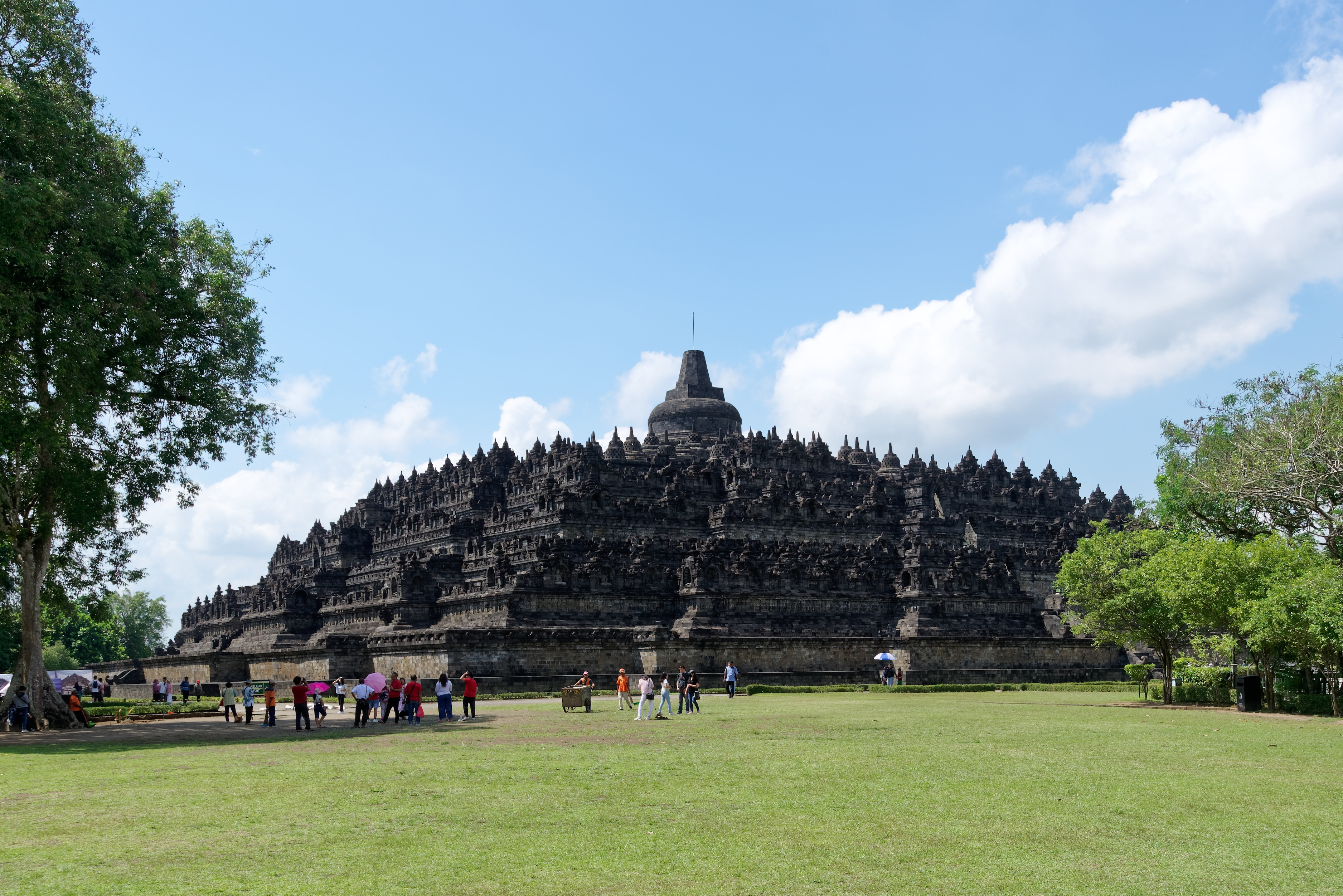Borobudur, located on the Indonesian island of Java, is the world's largest Buddhist temple renowned for its stunning reliefs. Built in the 9th century during the reign of the Sailendra Dynasty, this monumental structure is a significant cultural symbol of Indonesia and a masterpiece of Buddhist architecture and sculpture. The temple serves as an important pilgrimage site and is celebrated for its intricate carvings which depict various stages of the Buddha's life. Its architectural design comprises three tiers, a pyramidal base with five concentric square terraces, a trunk cone with three circular platforms, and a monumental stupa at the top, symbolizing a meditative path to enlightenment.
Borobudur is situated in the lush Kedu Valley, surrounded by the twin volcanoes of Merapi and Merbabu, along with the Elo and Progo Rivers. This geographical location provides a scenic backdrop that enhances the temple's spiritual ambiance. The climate of the region is tropical, characterized by a wet season from October to April and a dry season from May to September, with consistently warm temperatures year-round.
Each year, Borobudur becomes the focal point of the Vesak festival, commemorating the birth, enlightenment, and death of Gautama Buddha. This important Buddhist festival attracts pilgrims from all over the world, who gather to participate in the processions and ceremonies that celebrate peace and reflection. The temple is also part of a UNESCO World Heritage Site, drawing tourists and researchers interested in its historical and architectural significance.
Some interesting facts about Borobudur include that it was abandoned in the 14th century due to the decline of Buddhism and the shift of political power, being rediscovered in the 19th century by Sir Thomas Raffles, the British ruler of Java. Its conservation and restoration efforts are top priorities for Indonesian and international cultural programs, ensuring its preservation for future generations.
 Jakub Hałun, CC BY-SA 4.0, via Wikimedia Commons
Jakub Hałun, CC BY-SA 4.0, via Wikimedia CommonsIndonesiaAsia
Nearby Places
Log in to write a review.
Sustainable Travel Tips
Plan Mindfully
- Choose direct flights when possible
- Travel during off-peak seasons
- Pack light and bring reusables
- Prefer eco-friendly accommodations
At Your Destination
- Use public transport or walk
- Support local businesses
- Respect wildlife and habitats
- Choose activities with minimal impact
Daily Habits
- Reuse hotel towels
- Take shorter showers
- Turn off lights/AC when out
- Carry a reusable water bottle
